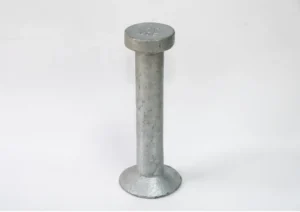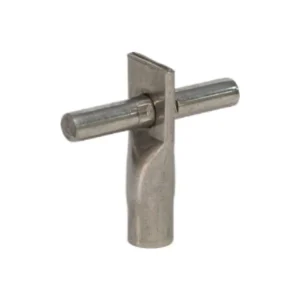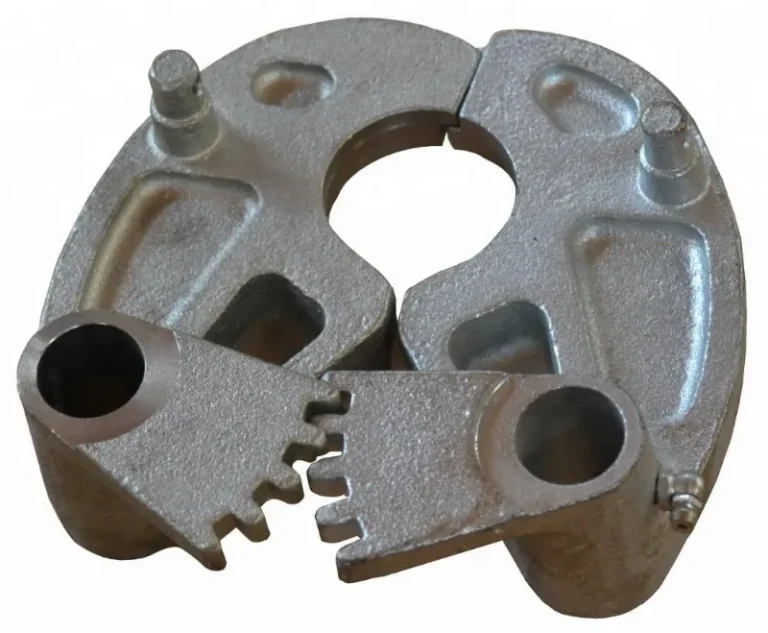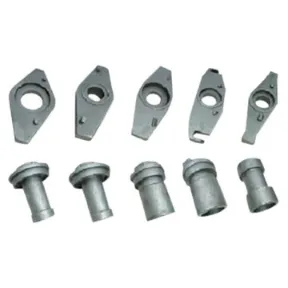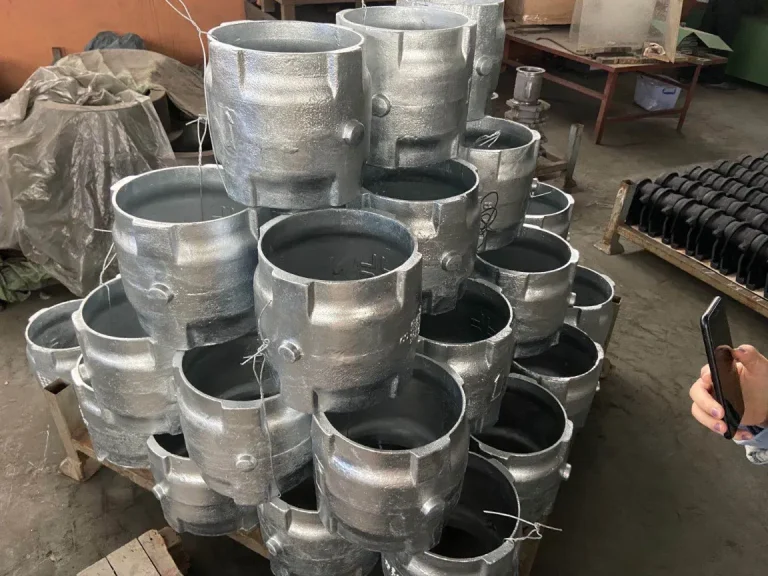Understanding the Role of Concrete Lifting Anchors in Construction
What Are Concrete Lifting Anchors?
Concrete lifting anchors are important tools in construction. They help handle precast concrete elements safely and quickly. These devices are placed into concrete during casting. They allow workers to lift, move, and set up concrete parts with care. Lifting anchors come in different shapes and materials. Each type fits specific weight needs and project goals.
Baoqi makes many precast systems, including lifting anchors. Their products are tested to meet high quality and industry standards. These anchors are key to moving heavy concrete parts without harming their structure.
Product Details
BaoQi lifting head anchor, intended for embedding along with a detachable recess former, serves the purposes of lifting, transportation, and handling.
Crafted from high-quality steel, BaoQi anchor head is forged to seamlessly accommodate a lifting clutch.
These BaoQi lifting head anchors adhere to the specifications outlined in the EU Machinery Directive 2006/42/EC and VDI/BV-BS 6205. They are meticulously designed and manufactured to meet the safety requirements associated with the lifting and handling of concrete elements.
BaoQi lifting head anchors Surface treatment options include plain, hot-dip galvanized, electro-galvanizing, or A4/A2 stainless steel.
For plain, hot-dip galvanized, and electro-galvanized variants, BaoQi lifting head anchors material is S355J2 in accordance with EN10025. For A4/A2 stainless steel, the material is 1.4301/1.4401 according to EN10088.
Key Features and Benefits of Using Lifting Anchors
Lifting anchors have features that make them vital for construction. They can carry heavy loads safely. They work with many lifting systems, so they fit different projects.
The benefits are clear. Lifting anchors make work faster. They help handle precast parts easily. By adding lifting anchors during production, teams save time on-site. This cuts delays. They also improve safety. Lifting anchors reduce risks from manual lifting or unsafe methods.
Qingdao Baoqi Intelligent Co., Ltd., started over 10 years ago, offers custom lifting anchor systems for various project needs.
Common Applications of Lifting Anchors in Construction Projects
Concrete lifting anchors are used in many construction tasks:
Precast Components: Precast walls, floors, and roof trusses use lifting anchors. They speed up building and lower labor costs.
Modular Buildings: These buildings use precast parts with lifting anchors. They allow easy assembly off-site and transport to final spots.
Infrastructure Projects: Bridges, tunnels, and highways use precast parts with lifting anchors. They make work more efficient.
Disaster Relief: Temporary shelters use precast parts with lifting anchors. They allow fast setup for urgent needs.
Commercial and Residential Buildings: Stores and housing projects use lifting anchors. They help finish projects quickly.
The Impact of Lifting Anchors on Construction Productivity
How Lifting Anchors Streamline Material Handling
Lifting anchors make moving materials easier. They provide safe spots for cranes or hoists to grab. This avoids risky, makeshift solutions. By adding lifting anchors during manufacturing, teams can lift and place heavy parts without extra changes.
Good logistics are key for smooth operations. Lifting anchor systems help projects run like clockwork, just like timely deliveries in trade.
Reducing Labor Time with Efficient Lifting Solutions
Concrete lifting anchors save labor time. Old methods for moving heavy concrete need lots of workers and time. Lifting anchors change that. They allow quick connections to machines.
This saves money. It cuts labor costs and shortens project times. Workers can focus on other tasks instead of heavy lifting.
Enhancing Safety Standards Through the Use of Lifting Anchors
Safety is a big deal in construction. Bad handling of heavy materials can cause accidents or damage. Concrete lifting anchors fix this. They offer strong support during lifting.
These systems meet tough safety rules. They can hold heavy loads without breaking. Baoqi uses high-quality materials and strong designs. This makes construction safer.
Baoqi tests products carefully before shipping. They follow ISO-9001 quality standards. This builds trust with contractors who use their lifting anchors.
Implementation of Lifting Anchor Systems in a Major Construction Project
Selecting the Right Type of Lifting Anchor for the Project
Choosing the right lifting anchor is key. Concrete lifting anchors come in types like threaded socket systems, cast-in loops, and rapid lifting systems. Each handles specific weights and project needs. Threaded socket systems work for precise projects. Cast-in loops are great for heavy tasks like bridges.
Precast parts like walls or floors use lifting anchors to speed up work and cut costs. When picking a lifting anchor, consider the weight of precast parts, weather conditions, and hoist compatibility. Following safety rules ensures the system holds up under stress.
Installation Process and Best Practices for Concrete Lifting Anchors
Installing concrete lifting anchors happens during casting. They are placed into precast parts. Correct placement is important. It ensures even weight distribution when lifting. Engineers plan the best spots based on weight and anchor details.
Use high-quality materials that meet industry standards. Check anchors before installing.
Train workers to handle anchors properly. Use special tools for installation. Regular checks keep the system reliable over time.
Overcoming Challenges During the Deployment of Lifting Anchor Systems
Using lifting anchor systems can have challenges. Sites may have uneven ground or tight spaces. These can make crane work hard. Custom lifting solutions may be needed.
Good planning is vital. It’s like managing logistics in trade to avoid delays. Engineers, contractors, and suppliers must work together. This ensures parts arrive on time and are installed right.
Safety is another challenge. Strict safety rules and certified equipment help keep workers safe when handling heavy materials.
The Long-Term Benefits of Using Concrete Lifting Anchors in Construction
Cost Efficiency Achieved Through Improved Productivity
Concrete lifting anchors boost productivity. They simplify material handling. Old methods need lots of workers and slow steps. Lifting anchors allow quick connections to hoists. This cuts labor time and costs.
This saves money on big projects. Teams can stick to tight schedules without losing quality or safety. Precast parts in modular buildings use lifting anchors. They speed up assembly on-site.
Durability and Reliability of Lifting Anchor Systems in Large-Scale Projects
Durability is a big plus for concrete lifting anchors. They handle heavy loads without bending or breaking. This makes them reliable for tough projects like bridges or tunnels.
Qingdao Baoqi Intelligent Co., Ltd. focuses on quality. Their plants meet ISO-9001 standards. Every product is tested to perform well.
Reliable lifting anchors reduce maintenance costs. They handle wear and tear during repeated use in big projects.
Contribution to Sustainable Construction Practices
Concrete lifting anchors support green building. They allow precise handling of precast parts. This reduces damage during transport or setup. It saves materials and lowers environmental impact.
Many makers offer eco-friendly options. Precast components meet environmental and carbon emission rules. Using these products helps meet global green goals.
Sustainability also means safer workplaces. Concrete lifting anchors improve safety with better engineering. This leads to fewer accidents and better worker well-being.
Frequently Asked Questions
What factors should be considered when selecting a concrete lifting anchor?
Consider load capacity, hoist compatibility, site conditions, and safety standards.
How do concrete lifting anchors improve productivity?
They simplify material handling. They allow quick hoist connections. This cuts labor time and speeds up projects.
Are concrete lifting anchors suitable for sustainable construction?
Yes, precast components meet environmental protection requirements. They are an eco-friendly choice.
For more information about products or services at Qingdao Baoqi Intelligent Co., Ltd., specializing in forging parts for over 10 years with ISO-certified plants, visit their homepage today!

